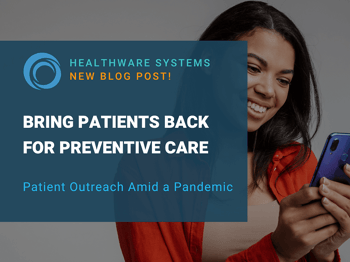How Does ActiveXCHANGE Help Achieve Healthcare Interoperability?
What Is Healthcare Interoperability?
According to HIMSS:
“In healthcare, interoperability is the ability of different information technology systems and software applications to communicate, exchange data, and use the information that has been exchanged. Data exchange schema and standards should permit data to be shared across clinician, lab, hospital, pharmacy, and patient regardless of the application or application vendor. Interoperability means the ability of health information systems to work together within and across organizational boundaries to advance the effective delivery of healthcare for individuals and communities.”
Why Is Achieving Interoperability Important?
-
Interoperability is vital to patient safety and public health and a lack of interoperability leads to poor health outcomes and higher healthcare costs.
-
Seamlessly sending, receiving, interpreting, and integrating data significantly improves the patient experience and patients often expect that their information will be readily available to them and their healthcare providers.
-
Federal efforts to achieve healthcare interoperability are aimed at giving patients access to and control over their medical information.
-
Interoperable technology streamlines organizational workflows and increases efficiency, plus cuts costs, by eliminating manual and redundant steps in the process of exchanging data.
-
Better interoperability helps with reducing physician burnout, which is often tied to EMR frustrations and administrative burdens that can be traced back to interoperability problems (such as sifting through an overwhelming abundance of low-quality data to find the information they need and spending more time with the computer than with the patient).
-
The Office of the National Coordinator for Health Information Technology (ONC) states that “Seamless data flow will also accelerate progress on a range of national health priorities that include combatting the opioid epidemic, spurring clinical innovation, and accelerating science.”
What Are the Challenges to Achieving Interoperability in Healthcare?
-
Disparate Technology Systems – there are numerous distinct EMRs in use today by different health providers and organizations, and most were not made for the purpose of integrating with others.
-
No Standardization – there has been no uniform method of identifying patients or shared clinical terminology used among different EMRs, resulting in inaccuracies when matching individuals to their health data, duplicate medical records/patient accounts, and costly repeat testing.
-
Fragmented Data & Information Delays – variations between systems in the way they handle information also leads to incomplete medical records and slows down the transmission of data.
-
Unstructured Data – information may be exchanged in a myriad of different formats, including fax, scanned images/documents, hard copies, and other non-electronic forms of unstructured data; many facilities are only able to integrate this information through manual work.
-
Design and Usability – the ONC found that barriers to interoperability identified by healthcare providers and other stakeholders include “the differences in user-interface design across developers variations in the design that make day-to-day use complicated when a health care provider uses multiple systems and the lack of developer engagement with end users of health IT regarding design needs.”
-
Cost of Replacing Technology – providers have made large investments in their EMRs and other health IT systems and may be unable or hesitant to purchase new solutions.
-
Security Concerns – providers are also cautious of maintaining patient privacy and HIPAA compliance when considering new solutions.
-
Information Blocking* – due to “legal and business incentives,” health “information networks and their participants often treat individuals’ electronic health information as an asset that can be restricted to obtain or maintain competitive advantage,” per the ONC.
-
Third-Party Integration – challenges extend beyond the internal solutions used by the healthcare provider. Third-party solution providers and service vendors introduce additional challenges for sharing information between systems.
*In accordance with the Cures Act and Interoperability and Patient Access final rule (CMS-9115-F), in late 2020 the Centers for Medicare & Medicaid Services (CMS) will start publicly reporting “eligible clinicians, hospitals, and critical access hospitals (CAHs) that may be information blocking” and “those providers who do not list or update their digital contact information in the National Plan and Provider Enumeration System (NPPES).”
How Does ActiveXCHANGE Solve These Challenges to Help Achieve Healthcare Interoperability?
ActiveXCHANGE helps facilities achieve healthcare interoperability in the following ways:
-
Provides a bi-directional gateway for consolidating information from any source (this includes multiple scheduling systems, custom interfaces, HL7, FHIR, XML, web-based requisition systems, EHRs/EMRs, faxes, direct messaging, e-mail, hard copies, scanned documents/images, and verbal appointments).
-
Interprets all information and makes it actionable, regardless of the structured or unstructured format in which it’s received.
-
Automatically transforms all incoming information into an electronic format.
-
Performs “image cleanup” (e.g. corrects alignment issues, discards blank or irrelevant pages, “de-speckles” to remove unwanted marks) on graphic images and scanned documents and extracts key data from each page.
-
Intelligently manages information objects by using business rules to find and make usable relevant data, determining what to do with that information, and flagging errors and exceptions (for example, detecting missing signatures or required forms/documentation) for resolution.
-
Drives and automates processes and workflows based on business rules and triggered by incoming information objects.
-
Routes information through business rules and account matching to the appropriate destination (e.g. EMR, physician portals, document management systems, other third-party applications) in virtually any format and in a user-friendly form that the destination system can accept.
-
Operates bi-directionally to manage incoming and outgoing communication (e.g. automated voice message (TTS), text, e-mail, pagers, fax, traditional mail) between healthcare facilities, patients, physicians, affiliated organizations, remote workers, payers, and vendors – whether the recipient has an ActiveXCHANGE server or not.
-
Ensures the secure, HIPAA-compliant exchange of information.
-
Supports custom workflows and can be configured to meet the unique needs of each department across a client enterprise.
-
HealthWare Systems specializes in integrating proprietary and third-party patient access technologies and provides the platform for connecting disparate health IT systems and EMRs/EHRs, so there is no need to replace your investment in your current technology.
-
All costs (e.g. software, implementation, training, transaction fees, hardware) for our solutions are included in one monthly subscription payment and there are NO upfront fees, creating a more immediate return on investment for our clients.
As the ONC wrote, “Improved interoperability can strengthen market competition, result in greater quality, safety, and value for the healthcare system, and enable patients, healthcare providers, and payers to experience the benefits of health IT.”
Contact us today to learn more about how ActiveXCHANGE can help you achieve healthcare interoperability or schedule a live demo of our solution.

